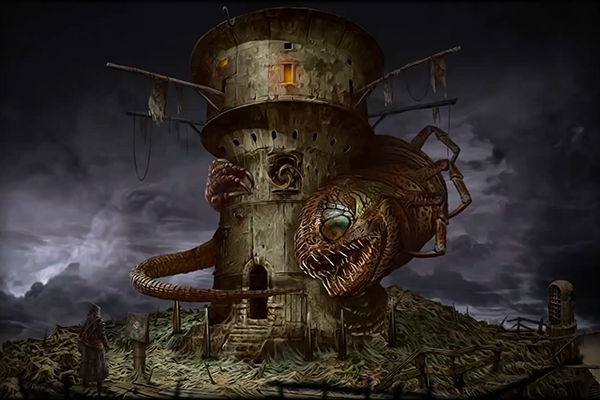Rating: B-
As we jump from one adventure game to another, Tormentum: Dark Sorrow is an indie horror adventure game that runs mainly on its fantastic art style. The makers of Tormentum were inspired by the art of Dark Souls, Zdzislaw Beksinski (who, by the way, is FANTASTIC) and HR Giger —whom you’ll most likely know as the man who created the Xenomorphs from the Alien movie franchise. The result is a sharp, surreal, and often genuinely disturbing world of pain and misery. It tells the story of a prisoner who has escaped from their bonds in a house of the damned, where they have been condemned to be tortured to death. All that is left for the player to do is escape back into the real world.
Unfortunately, Tormentum: Dark Sorrow has little to offer beside its amazing art style, most of which can be appreciated just by watching its trailer or a walkthrough—and you’ll likely need a walkthrough anyway. The puzzles are just opaque enough to make the player feel like they have missed something incredibly obvious. At one point a somewhat dim prison guard explained to me point blank exactly what I needed to do to prevent a giant spider from escaping its cell—but beyond that, I had no clue how to progress. Searching pixel by pixel through every room did not help. When I finally looked up a walkthrough to see how to progress, I didn’t feel any relief. Instead, I just thought “how the hell could I have figured that out?” This is the mark of a poorly designed adventure game.
Tormentum: Dark Sorrow wants you to think it is edgy. It is full of violence and musings on death, it has an oppressive atmosphere, many characters die and your human status is constantly questioned. But none of it has substance. Like an angsty teen who discovers ambient music, goes for a walk by themselves at night, looks up into the starry sky, and realises that they are very small in the universe—and then congratulates themselves on how deep that thought was.



